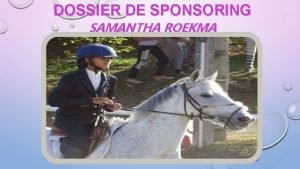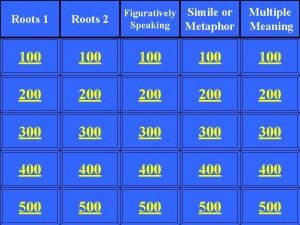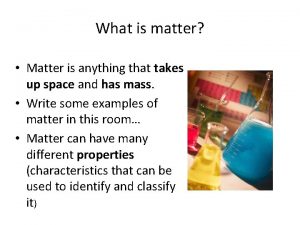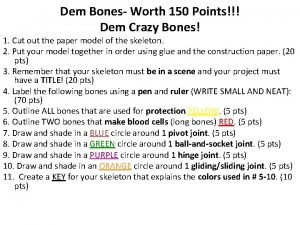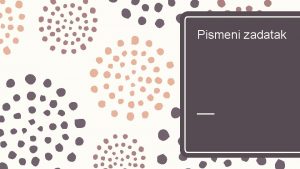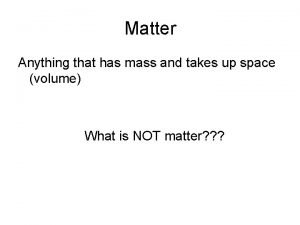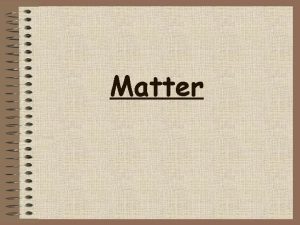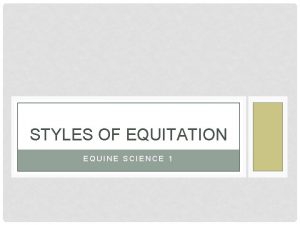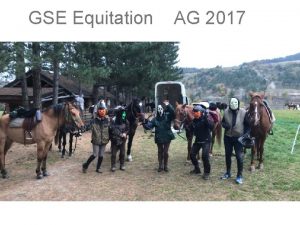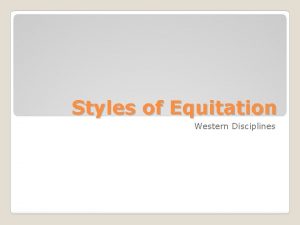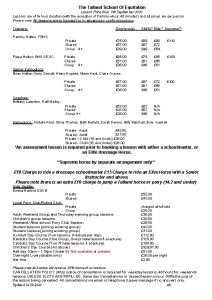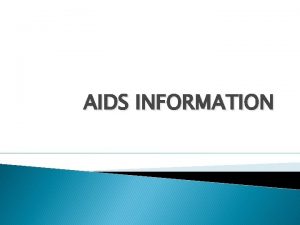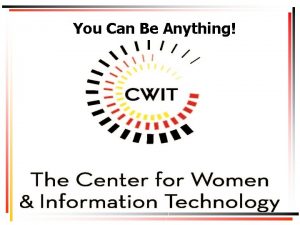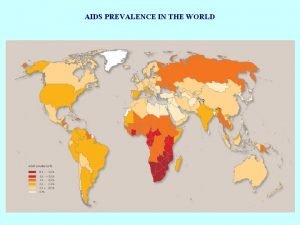Equitation Use of Aids What are aids Anything
















- Slides: 16

Equitation- Use of Aids

What are aids? Anything you use to communicate with your horse 2 enhance your natural aids Types of Aids Natural- what you posses Voice Seat (weight) Leg Hands Artificial Man-made tools to

Your Seat Influences: The direction of horses motion- forward, back, sideways The speed of the horses gait (slow, fast, stop) Want an independent seat- meaning that your seat moves with the horses motion, but is independent of your other aids.

Seat and Balance A riders seat is dependent upon the riders balance Uses core muscles to stay upright Shoulders back, sit tall, abdominal muscles engaged Should have a straight line from the shoulder through the hip, to the back of the heel Maintain position while riding

Incorrect Correct Incorrect

Seat and Balance As you sit forward= encourages horse to move forward As you sit back =- encourages horse to slow or stop As your weight shifts to the side= encourage horse to move in that direction

The Legs The major influences are to Create forward movement. Activate the hindquarters. Indicate direction. Influence length bend.

Legs Horses natural move away from pressure Training increases a horses natural sensitivity to pressure Legs should be used to move forward or change direction

Both legs at the same time = encourage forward movement One leg = change directions By the girth or slightly behind Encourages the hind leg on that side to move forward and away from pressure – lateral movement

Leg Aids Pressure should not be constant Use if asking for a response Always start with small amounts of pressure and increase if the horse doesn’t respond Try not to kick hard or use spurs all the time -, horse becomes desensitized or “deadsided” May use artificial aids to encourage response Spurs, crops, reins

3 Uses of Leg Aids https: //www. youtube. com/watch? v=U 5 HWhv. DV 9 gw

The Hands The major influences are to: Communicate with horse through the mouth (bit) Control the speed (the tempo of the gait) To ask for bend in the neck

The hands NOT TO HELP YOU BALANCE!!!!!!!!!!!!!!!! Direct connection to the horses mouth (brain) Can easily mentally scar a horse for life if rider uses harsh or heavy hands Hands should be light, soft, and elastic with the horses movement

The Hands Always try to direct the horse first with your legs and seat, then through the reins.

Voice Tone of voice Volume of voice Verbally ask for an action before physically asking (if appropriate) Sometimes this helps the rider more than the horse

Artificial Aids Extension of the riders natural aids Use with care and caution Spurs Whips and crops
 Dossier sponsoring equitation
Dossier sponsoring equitation Mikael ferm
Mikael ferm Yesterday
Yesterday Through you blind eyes are open
Through you blind eyes are open Onomatopoeia
Onomatopoeia I won't remember anything else
I won't remember anything else The avalanche devoured everything that stood in its way
The avalanche devoured everything that stood in its way What is matter
What is matter Dem bones project
Dem bones project Matter anything that
Matter anything that Pismeni zadatak
Pismeni zadatak Oxiclean
Oxiclean Benjamin cummings
Benjamin cummings Anything that has mass and takes up space
Anything that has mass and takes up space Will you please be quiet please summary
Will you please be quiet please summary Dmv formula
Dmv formula In what way is thisby's final speech humorous?
In what way is thisby's final speech humorous?
